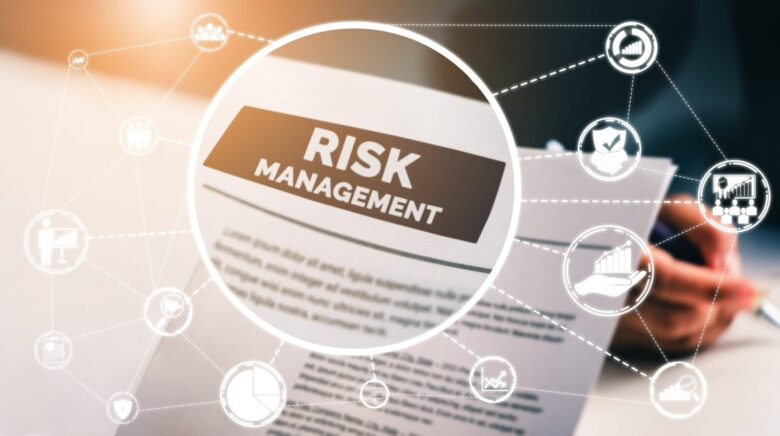Risk management helps the company to be always on the alert and not be afraid of difficulties. Any business is an opportunity to make a profit, but it is always associated with the danger of losing it. Where do the risks come from and how to deal with them effectively? In this article, we want to share tips on risk management.
What do risks mean for business?

Source: unsplash.com
All risks are different: reputational, financial, credit, compliance risks. And the more complex and larger the business becomes, the more difficult it is to manage and the higher the weight of risks and associated consequences.
The risk-based approach enables companies to manage risks more confidently and allows achieve various goals:
- Reducing the level of uncertainty. In addition to controlling the impact of uncertainty on the goals of the organization, a set of measures is being developed to reduce the likelihood of negative consequences, as well as actions to minimize the impact of realized risks.
- Increase efficiency and optimize planning. Risk-oriented thinking in the decision-making process allows you to have correct input data, key indicators, process results, and possible development prospects, which gives new opportunities for balanced and effective management and planning of the company’s activities.
- Saving resources. In risk management, special attention is paid to the economic feasibility of carrying out various activities. Regular review and audit of resources allow you to increase the liquidity of assets, thereby avoiding losses and increasing the income of the organization.
- The relevance of the information. Risk-oriented thinking allows you to actualize information, as well as its importance and relevance, which is difficult to overestimate when further building a corporate strategy at any level of the company.
World practice of regulation and risk assessment
Developed countries with more advanced financial infrastructure have more clearly felt the waves of economic crises. Their legislative bodies have introduced additional requirements, business rules, and responsibilities for entities that place their shares on stock exchanges and officials responsible for financial reporting. One of the main innovations was a cardinal increase in attention to the adequacy of internal controls and to risk management systems (Enterprise Risk Management, ERM), of which the threat of fraud was identified as the key.
What is risk management?

Source: paymentsjournal.com
Risk management is a system of risk management and economic, more precisely, financial relations arising in the process of this management. Risk management includes management strategy and tactics.
Management strategy is understood as the direction and method of using funds to achieve the set goal. This method corresponds to a certain set of rules and restrictions for making a decision. The strategy allows you to concentrate efforts on solutions that do not contradict the adopted strategy, discarding all other options. After achieving the set goal, the strategy as a direction and means of achieving it ceases to exist. New goals set the task of developing a new strategy.
Main steps in dealing with risks
1. Planning

Source: unsplash.com
Every business should have a clear risk management plan. The format can vary greatly depending on the needs of your company. However, several important points should be included in the risk management plan. Here they are:
- Create a list of all possible risks in the project;
- Rate of each risk based on probability and impact;
- Assess of current control level;
- Create an action plan for managing every risk.
Now more and more teams are implementing Agile frameworks (Scrum, Kanban, and others). Agile risk management strategy will allow the team to prepare for undesirable events, and neutralize them in time, or at least control them within the project, while maintaining the productivity of the team, and not working in an emergency mode.
2. Choosing the strategy

Source: unsplash.com
Thus, at this stage of the series, we have identified all the main risks in our business, prioritized them based on probability and impact, and evaluated the effectiveness of our current controls.
The next step will be to decide what to do with each risk so that we can better manage them. There are four main strategies in the world of risk management:
- Avoid it.
- Shorten it.
- Hand it over.
- Accept it.
Each strategy has its advantages and disadvantages, and you’ll probably end up using all four. Sometimes it is necessary to avoid the risk, and sometimes you need to reduce it, transfer it or just accept it.
How to Simplify Risk Management Steps with Jira
The Jira product line helps to take control of a lot of things in the company. Starting from task management in each team, and ending with project portfolio management.
Jira helps to set up and automate universally recognized ITSM processes based on the ITIL framework, including risk management.
With Jira, it’s possible to create the whole risk management system in the company – a set of automation tools, regulatory and organizational documentation, working procedures, staff positions, and specific employees who occupy them, designed to manage risks within the framework of an organization’s project activities.
The main advantages of Jira Software

Source: blog.deviniti.com
We provide Jira Software integration service for different teams, opening up additional opportunities:
- Customization of the workflow. Customize it for your team for the most productive work.
- Dozens of reports help to monitor the work activity in the team.
- Prioritization of tasks: Combine small tasks into long-running sprints and epics, track the workload.
- Simplified search: the built-in JQL language will help you find the right file in no time.
- Suitable for different teams: Jira Software is suitable for both the development team and the sales and HR department — there is no need to look for additional software.
- Integration with other products, for example, for developing and creating code (Bitbucket, Bamboo, Fisheye), similar project management programs (ServiceNow, Zendesk), and other support services (Github, Jenkins, Docker), as well as thousands of applications from the Atlassian Marketplace.
Atlassian Polontech experts integrate Jira and other necessary tools to create a unique ITSM system for your company.
Contact the experts
For a full awareness of threats and an adequate response to them, you should rely on risk experts in those areas in which you want to conduct full-fledged risk management.
Polontech specialists will be able to direct, evaluate, tell about the nature of risks, show all the advantages of a systematic approach, and integrate a solution suitable for your business.
